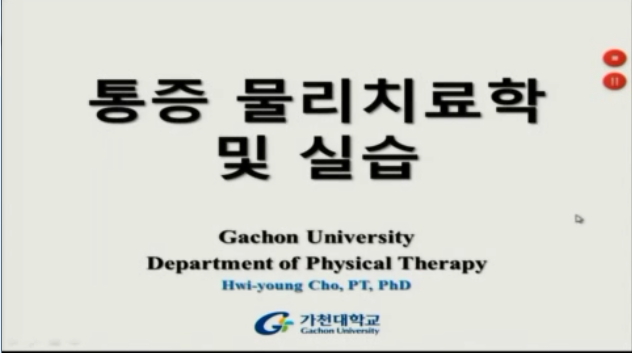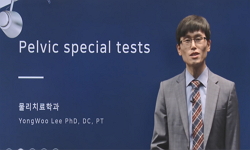Objectives: Assessment of dental pain severity is very challenging in dentistry. Previous studies have suggested that elevated salivary alpha amylase may contribute to increased physical stresses. There is a close association between salivary alpha a...
http://chineseinput.net/에서 pinyin(병음)방식으로 중국어를 변환할 수 있습니다.
변환된 중국어를 복사하여 사용하시면 됩니다.
- 中文 을 입력하시려면 zhongwen을 입력하시고 space를누르시면됩니다.
- 北京 을 입력하시려면 beijing을 입력하시고 space를 누르시면 됩니다.

The relationship between the level of salivary alpha amylase activity and pain severity in patients with symptomatic irreversible pulpitis
한글로보기https://www.riss.kr/link?id=A100021902
-
저자
Fatemeh Ahmadi-Motamayel (Hamadan University of Medical Sciences, Hamadan, Iran) ; Shahriar Shahriari (Hamadan University of Medical Sciences Faculty of Dentistry, Hamadan, Iran) ; Mohammad Taghi Goodarz ; Abbas Moghimbeigi (Hamadan University of Medical Sciences Faculty of Public Health, Hamadan, Iran) ; Mina Jazaeri (Hamadan University of Medical Sciences Faculty of Dentistry, Hamadan, Iran) ; Parisa Babaei (Dentist in private practice, Hamadan, Iran)
- 발행기관
- 학술지명
- 권호사항
-
발행연도
2013
-
작성언어
English
-
주제어
Alpha Amylase ; Pain ; Pulpitis ; Saliva
-
KDC
515
-
등재정보
KCI등재
-
자료형태
학술저널
- 발행기관 URL
-
수록면
141-145(5쪽)
-
KCI 피인용횟수
0
- DOI식별코드
- 제공처
-
0
상세조회 -
0
다운로드
부가정보
다국어 초록 (Multilingual Abstract)
Previous studies have suggested that elevated salivary alpha amylase may contribute to increased physical stresses. There is a close association between salivary alpha amylase and plasma norepinephrine under stressful physical conditions. The aim of this study was to evaluate the relationship between pain severity and salivary alpha amylase levels in patients with symptomatic irreversible pulpitis. Materials and Methods: Thirtysix patients (20 females and 16 males) with severe tooth pain due to symptomatic irreversible pulpitis were selected. The visual analogue scale (VAS) score was used to assess the pain severity in each patient. Unstimulated whole saliva was collected, and the level of alpha amylase activity was assessed by the spectrophotometric method.
Statistical analysis was performed using SPSS 13. Results: The level of alpha amylase was significantly increased in the saliva in association with pain severity assessed by VAS. The salivary alpha amylase was also elevated with increased age and in males.
Conclusions: There was a significant correlation between the VAS pain scale and salivary alpha amylase level, which indicates this biomarker may be a good index for the objective assessment of pain intensity.
Objectives: Assessment of dental pain severity is very challenging in dentistry.
Previous studies have suggested that elevated salivary alpha amylase may contribute to increased physical stresses. There is a close association between salivary alpha amylase and plasma norepinephrine under stressful physical conditions. The aim of this study was to evaluate the relationship between pain severity and salivary alpha amylase levels in patients with symptomatic irreversible pulpitis. Materials and Methods: Thirtysix patients (20 females and 16 males) with severe tooth pain due to symptomatic irreversible pulpitis were selected. The visual analogue scale (VAS) score was used to assess the pain severity in each patient. Unstimulated whole saliva was collected, and the level of alpha amylase activity was assessed by the spectrophotometric method.
Statistical analysis was performed using SPSS 13. Results: The level of alpha amylase was significantly increased in the saliva in association with pain severity assessed by VAS. The salivary alpha amylase was also elevated with increased age and in males.
Conclusions: There was a significant correlation between the VAS pain scale and salivary alpha amylase level, which indicates this biomarker may be a good index for the objective assessment of pain intensity.
참고문헌 (Reference)
1 Noto Y, "The relationship between salivary biomarkers and state-trait anxiety inventory score under mental arithmetic stress: a pilot study" 101 : 1873-1876, 2005
2 Robles TF, "The feasibility of ambulatory biosensor measurement of salivary alpha amylase:relationships with self-reported and naturalistic psychological stress" 86 : 50-56, 2011
3 James GD, "The biological stress response and lifestyle: catecholamines and blood pressure" 26 : 313-335, 1997
4 Tietz NW, "Textbook of clinical chemistry" W.B. Saunders 726-, 1986
5 Nater UM, "Stress-induced changes in human salivary alpha-amylase activity - associations with adrenergic activity" 49-58, 2006
6 Faulkner W, "Selected methods for the small clinical chemistry laboratory. vol. 9" American Association for Clinical Chemistry 330-, 1982
7 Uesato M, "Salivary amylase activity is useful for assessing preoperative stress in response to pain in patients undergoing endoscopic submucosal dissection of gastric tumors under deep sedation" 13 : 84-89, 2010
8 Inukai K, "Salivary alpha-amylase levels and big five personality factors in adults" 31 : 771-774, 2010
9 Granger DA, "Salivary alpha-amylase in biobehavioral research: recent developments and applications" 1098 : 122-144, 2007
10 Campos MJ, "Salivary alpha-amylase activity: a possible indicator of paininduced stress in orthodontic patients" 12 : 1162-1166, 2011
1 Noto Y, "The relationship between salivary biomarkers and state-trait anxiety inventory score under mental arithmetic stress: a pilot study" 101 : 1873-1876, 2005
2 Robles TF, "The feasibility of ambulatory biosensor measurement of salivary alpha amylase:relationships with self-reported and naturalistic psychological stress" 86 : 50-56, 2011
3 James GD, "The biological stress response and lifestyle: catecholamines and blood pressure" 26 : 313-335, 1997
4 Tietz NW, "Textbook of clinical chemistry" W.B. Saunders 726-, 1986
5 Nater UM, "Stress-induced changes in human salivary alpha-amylase activity - associations with adrenergic activity" 49-58, 2006
6 Faulkner W, "Selected methods for the small clinical chemistry laboratory. vol. 9" American Association for Clinical Chemistry 330-, 1982
7 Uesato M, "Salivary amylase activity is useful for assessing preoperative stress in response to pain in patients undergoing endoscopic submucosal dissection of gastric tumors under deep sedation" 13 : 84-89, 2010
8 Inukai K, "Salivary alpha-amylase levels and big five personality factors in adults" 31 : 771-774, 2010
9 Granger DA, "Salivary alpha-amylase in biobehavioral research: recent developments and applications" 1098 : 122-144, 2007
10 Campos MJ, "Salivary alpha-amylase activity: a possible indicator of paininduced stress in orthodontic patients" 12 : 1162-1166, 2011
11 Bugdayci G, "Salivary alpha amylase activity in migraine patients" 155 : 121-124, 2010
12 Enberg N, "Saliva flow rate, amylase activity, and protein and electrolyte concentrations in saliva after acute alcohol consumption" 92 : 292-298, 2001
13 Navazesh M, "Methods for collecting saliva" 20 : 72-77, 1993
14 DeCaro JA, "Methodological considerations in the use of salivary alpha-amylase as a stress marker in field research" 20 : 617-619, 2008
15 Drummond PD, "Involvement of the sympathetic nervous system in complex regional pain syndrome" 3 : 35-42, 2004
16 Arai YC, "Intra-operative natural sound decreases salivary amylase activity of patients undergoing inguinal hernia repair under epidural anesthesia" 52 : 987-990, 2008
17 Dezan CC, "Flow rate, amylase activity, and protein and sialic acid concentrations of saliva from children aged 18, 30 and 42 months attending a baby clinic" 47 : 423-427, 2002
18 Abou-Seif MA, "Evaluation of some biochemical changes in diabetic patients" 346 : 161-170, 2004
19 Davis EP, "Developmental differences in infant salivary alpha-amylase and cortisol responses to stress" 34 : 795-804, 2009
20 Shirasaki S, "Correlation between salivary alpha-amylase activity and pain scale in patients with chronic pain" 32 : 120-123, 2007
21 Ben-Aryeh H, "Composition of whole unstimulated saliva of healthy children: changes with age" 35 : 929-931, 1990
22 Hargreaves KM, "Cohen’s Pathways of the pulp" Mosby Elsevier 1-39, 2011
23 Greenberg SM, "Burket’s Oral Medicine" BC Decker 258-, 2008
24 Monteleone P, "Asymmetry of salivary cortisol and α-amylase responses to psychosocial stress in anorexia nervosa but not in bulimia nervosa" 41 : 1963-1969, 2011
25 Deutsch O, "An approach to remove alpha amylase for proteomic analysis of low abundance biomarkers in human saliva" 29 : 4150-4157, 2008
26 Wewers ME, "A critical review of visual analogue scales in the measurement of clinical phenomena" 13 : 227-236, 1990
27 Aydin S., "A comparison of ghrelin, glucose, alphaamylase and protein levels in saliva from diabetics" 40 : 29-35, 2007
28 Aydin S, "A comparison of ghrelin, glucose, alphaamylase and protein levels in saliva from diabetics" 40 : 29-35, 2007
동일학술지(권/호) 다른 논문
-
- 大韓齒科保存學會
- Kaveh Oloomi
- 2013
- KCI등재
-
- 大韓齒科保存學會
- Suk-Ho Kang
- 2013
- KCI등재
-
The effects of image acquisition control of digital X-ray system on radiodensity quantification
- 大韓齒科保存學會
- Wook-Jin Seong
- 2013
- KCI등재
-
Biocompatibility of root-end filling materials: recent update
- 大韓齒科保存學會
- Payal Saxena
- 2013
- KCI등재
분석정보
인용정보 인용지수 설명보기
학술지 이력
| 연월일 | 이력구분 | 이력상세 | 등재구분 |
|---|---|---|---|
| 2027 | 평가예정 | 재인증평가 신청대상 (재인증) | |
| 2021-01-01 | 평가 | 등재학술지 유지 (재인증) |  |
| 2018-01-01 | 평가 | 등재학술지 선정 (계속평가) |  |
| 2017-12-01 | 평가 | 등재후보로 하락 (계속평가) |  |
| 2013-01-01 | 평가 | 등재 1차 FAIL (등재유지) |  |
| 2010-01-01 | 평가 | 등재학술지 유지 (등재유지) |  |
| 2008-01-01 | 평가 | 등재학술지 유지 (등재유지) |  |
| 2005-01-01 | 평가 | 등재학술지 선정 (등재후보2차) |  |
| 2004-01-01 | 평가 | 등재후보 1차 PASS (등재후보1차) |  |
| 2003-01-01 | 평가 | 등재후보학술지 유지 (등재후보1차) |  |
| 2002-01-01 | 평가 | 등재후보학술지 유지 (등재후보1차) |  |
| 2000-07-01 | 평가 | 등재후보학술지 선정 (신규평가) |  |
학술지 인용정보
| 기준연도 | WOS-KCI 통합IF(2년) | KCIF(2년) | KCIF(3년) |
|---|---|---|---|
| 2016 | 0.25 | 0.25 | 0.21 |
| KCIF(4년) | KCIF(5년) | 중심성지수(3년) | 즉시성지수 |
| 0.21 | 0.19 | 0.448 | 0.1 |




 RISS
RISS






